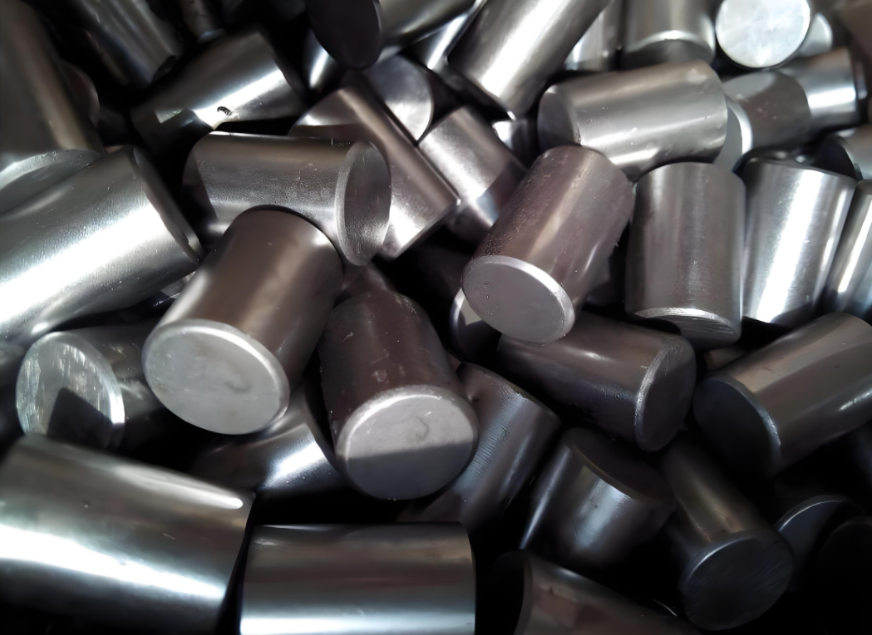As core components in mechanical transmission systems, bearings’ performance directly determines the efficiency and lifespan of the entire system. The choice of bearing material plays a crucial role, affecting not only the bearing’s load-bearing capacity, wear resistance, and fatigue strength, but also its thermal stability, lubricity, corrosion resistance, and other performance characteristics.
Load-bearing capacity: A balance between material strength and hardness
Load-bearing capacity, that is the maximum load a bearing can withstand, is the primary factor in measuring its fundamental performance. Material hardness and strength play a key role in this. High hardness means the material can resist deformation caused by external forces and is less susceptible to plastic deformation, thus ensuring that the bearing can function properly under heavy loads. For example, GCr15 high-carbon chromium steel is a typical example. Its high hardness makes it an ideal material for deep groove ball bearings and tapered roller bearings. Furthermore, the material’s plasticity and toughness are equally important. Good plasticity and toughness prevent bearings from breaking easily under sudden impact or uneven loads, which is crucial for extending bearing life. To this end, some advanced bearings use steel containing alloy elements such as nickel and molybdenum to improve the toughness and impact resistance of the material and meet the requirements of more working conditions.
Wear Resistance: The Key Role of Surface Quality and Chemical Composition
Wear resistance refers to the ability of a bearing material to resist surface wear under prolonged load. This performance is directly influenced by the material’s surface quality, chemical composition, and heat treatment process. Refined surface treatment techniques, such as grinding and polishing, can significantly improve surface smoothness and reduce the coefficient of friction, thereby effectively enhancing wear resistance. Furthermore, adjusting the material’s chemical composition, such as by adding alloying elements such as chromium, molybdenum, and vanadium, can further enhance the material’s wear resistance. This is particularly critical when bearings are required to operate at high speeds or under heavy loads. Furthermore, appropriate heat treatment processes, such as quenching and tempering, can improve the material’s microstructure, enhancing wear resistance while maintaining good toughness.
Fatigue Strength: A Protracted Battle in the Microscopic World
Fatigue strength reflects the bearing material’s ability to resist cracking and fracture under repeated stress and is a key indicator of a bearing’s long-term stable operation. The material’s microstructure and purity play a decisive role in this. Advanced metallurgical techniques and rigorous material inspection procedures can significantly reduce impurities and defects within the material, thereby improving fatigue strength.
Thermal Stability: A Line of Defense Against Temperature Challenges
Thermal stability refers to the ability of a bearing material to maintain its original physical properties and geometric dimensions in environments with high temperatures or frequent temperature fluctuations. This property is crucial for bearings, especially in high-temperature equipment such as engines and furnaces. A material’s coefficient of thermal expansion and thermal conductivity are two key factors influencing thermal stability. Materials with a low coefficient of thermal expansion, such as Invar alloy, minimize dimensional changes caused by rising temperatures and maintain good bearing clearances. High thermal conductivity, on the other hand, helps dissipate heat quickly, preventing damage caused by localized overheating. For example, the ceramic Si3N4 material, with its excellent thermal conductivity and low coefficient of thermal expansion, is a preferred material for high-temperature bearings.
Lubrication Performance: The Synergistic Effect of Surface Properties and Oil Storage Mechanisms
Lubrication performance is directly related to the smooth operation and heat generation of a bearing. The surface properties and porosity of the material itself play a key role in this. A smooth surface facilitates the formation of a lubricating film, reducing the risk of dry friction and minimizing energy loss. Some materials, such as bronze, are inherently self-lubricating, maintaining a certain degree of sliding even in the absence of oil. For porous materials, such as sintered bronze, their unique pore structure can act as a micro oil reservoir, ensuring the necessary lubrication supply even in intermittent operation or heavy load conditions, thereby significantly reducing wear and improving work efficiency.
Post time: Aug-28-2025








